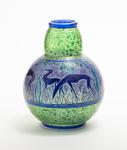 Marcel Goupy
Marcel Goupy Enameled Vase
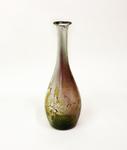 Orrefors
Orrefors Bottle Form Vase
 Orrefors
Orrefors Nubian Women with Elongated Bird 'Arial' Vase
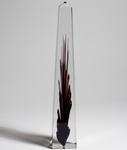 Fulvio Bianconi for Venini
Fulvio Bianconi for Venini Obelisk
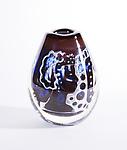 Orrefors
OrreforsWoman and Dove 'Ariel' Glass Vase
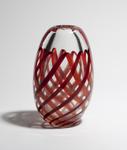 Vetreria Archimede Seguso
Vetreria Archimede Seguso Nastro Richiamato Vase
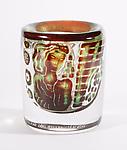 Orrefors
Orrefors Woman and Gondolier 'Ariel' Glass Vase
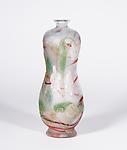 Burgun Schverer & Cie
Burgun Schverer & Cie Decorated Vase with White Flowers
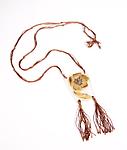 Argy-Rousseau
Argy-Rousseau Pate de Verre Pendant
Orrefors
"Water Games" 'Ariel' Glass Vase
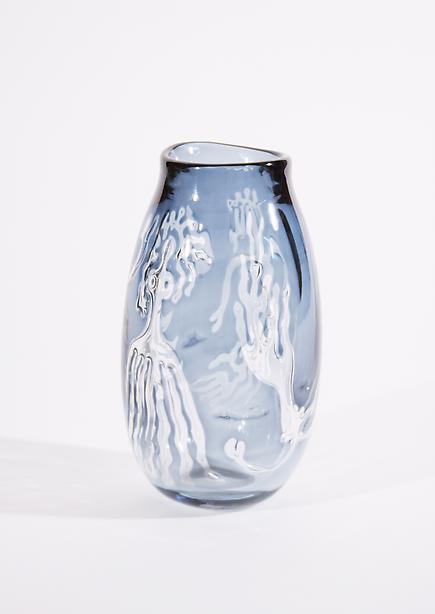
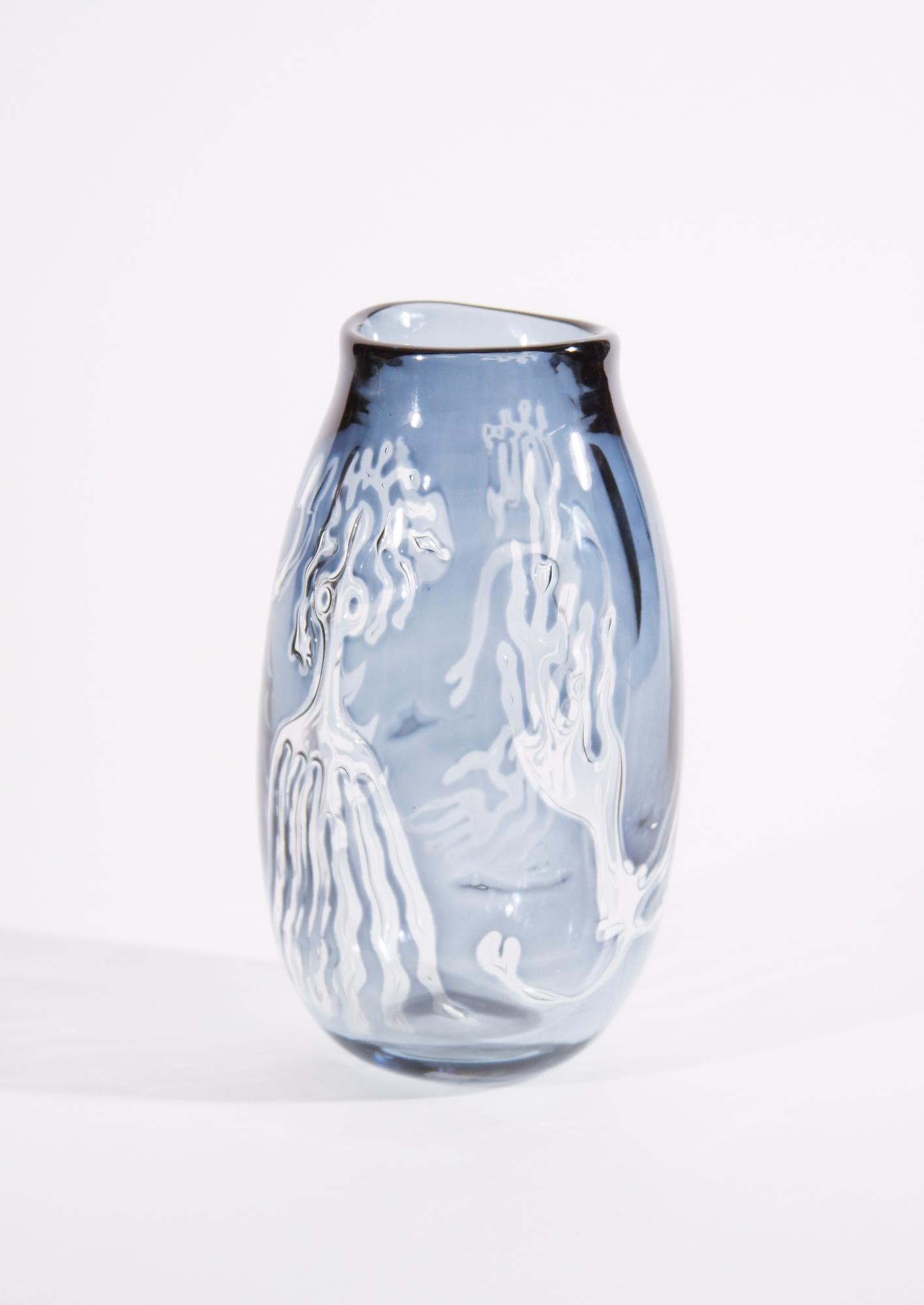
Height: 8 1/4 inches (21 centimeters)
Rare Orrefors 'Ariel' glass vase from 'Water Games' series, the elongated form with irregular rim in clear and blue glass surrounding anthropomorphic figures, designed by Ohrstrom, signed and with date code.
The Swedish firm, Orrefors Glassworks, founded in 1898, named one of their glassmaking techniques “Ariel” after the air spirit in Shakespeare's play “The Tempest.” Orrefors “Ariel” technique was developed in 1936 and was achieved by trapping air within the walls of the glass. “Ariel” glass is closely related to the “Graal” technique which was first introduced at Orrefors in 1916.
In “The Tempest,” the spirit Ariel is trapped in a “cloven pine” and is later freed and bound to serve the magician Prospero. The central layer of air evokes Ariel’s character as a sylph. The artists Gustav Bergkvist, Vicke Lindstrand and Edvin Öhrström created the technique for the firm.
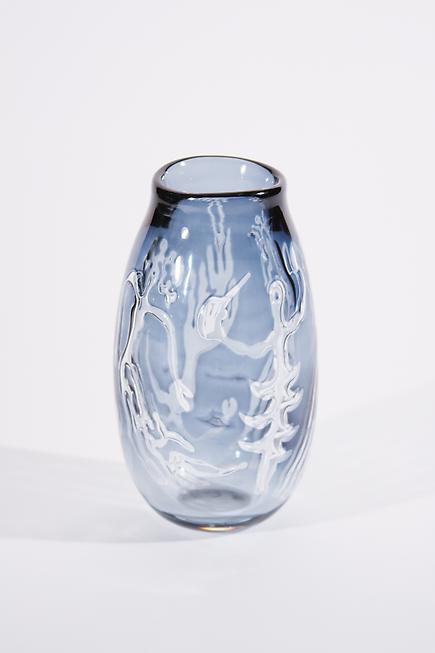
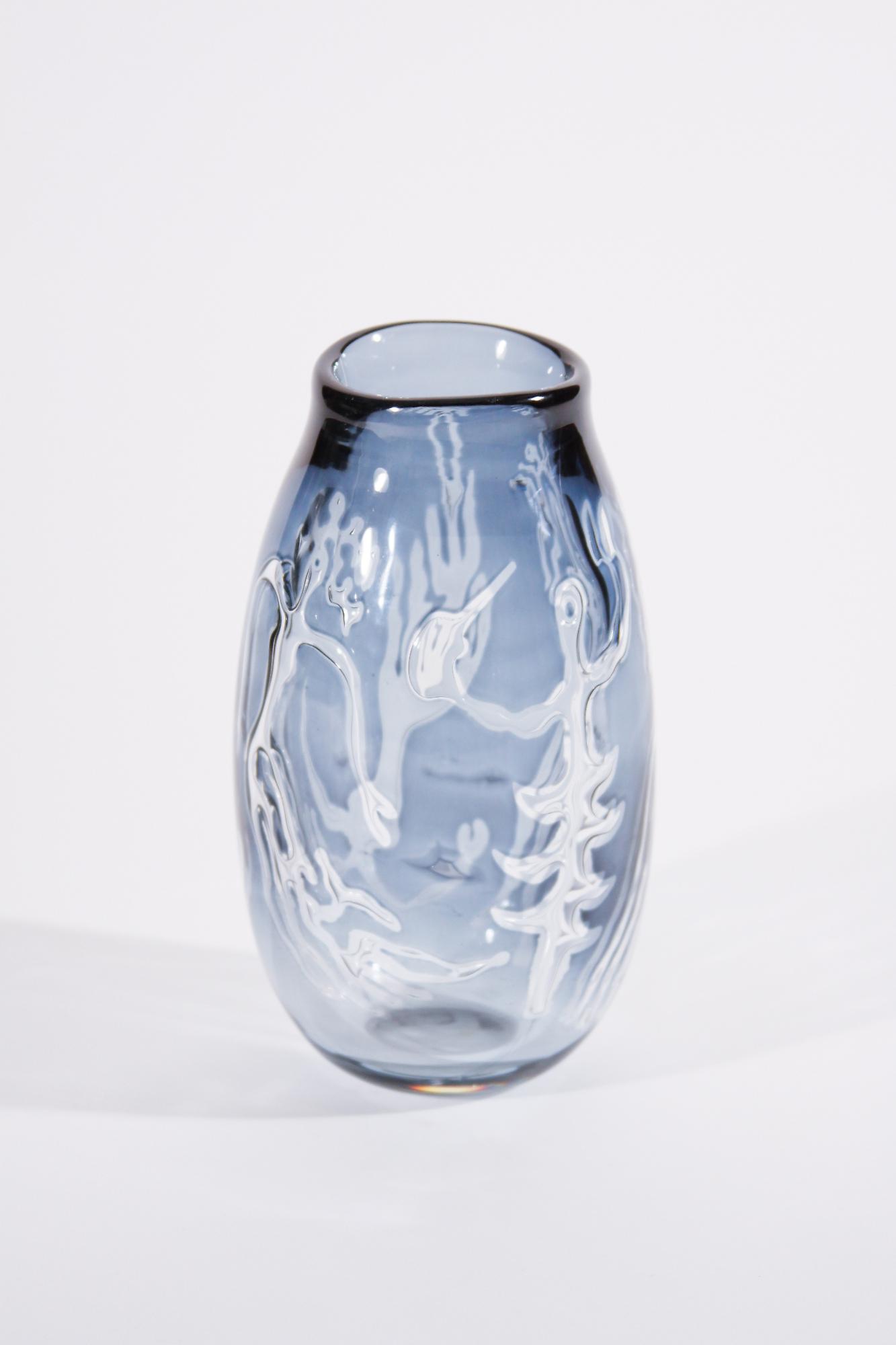
Height: 8 1/4 inches (21 centimeters)
Rare Orrefors 'Ariel' glass vase from 'Water Games' series, the elongated form with irregular rim in clear and blue glass surrounding anthropomorphic figures, designed by Ohrstrom, signed and with date code.
The Swedish firm, Orrefors Glassworks, founded in 1898, named one of their glassmaking techniques “Ariel” after the air spirit in Shakespeare's play “The Tempest.” Orrefors “Ariel” technique was developed in 1936 and was achieved by trapping air within the walls of the glass. “Ariel” glass is closely related to the “Graal” technique which was first introduced at Orrefors in 1916.
In “The Tempest,” the spirit Ariel is trapped in a “cloven pine” and is later freed and bound to serve the magician Prospero. The central layer of air evokes Ariel’s character as a sylph. The artists Gustav Bergkvist, Vicke Lindstrand and Edvin Öhrström created the technique for the firm.
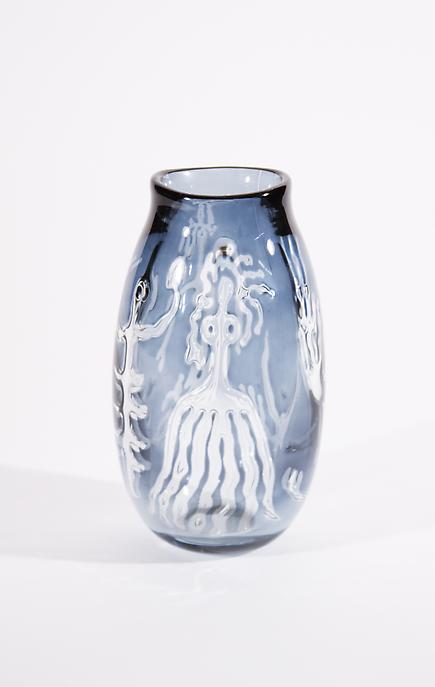
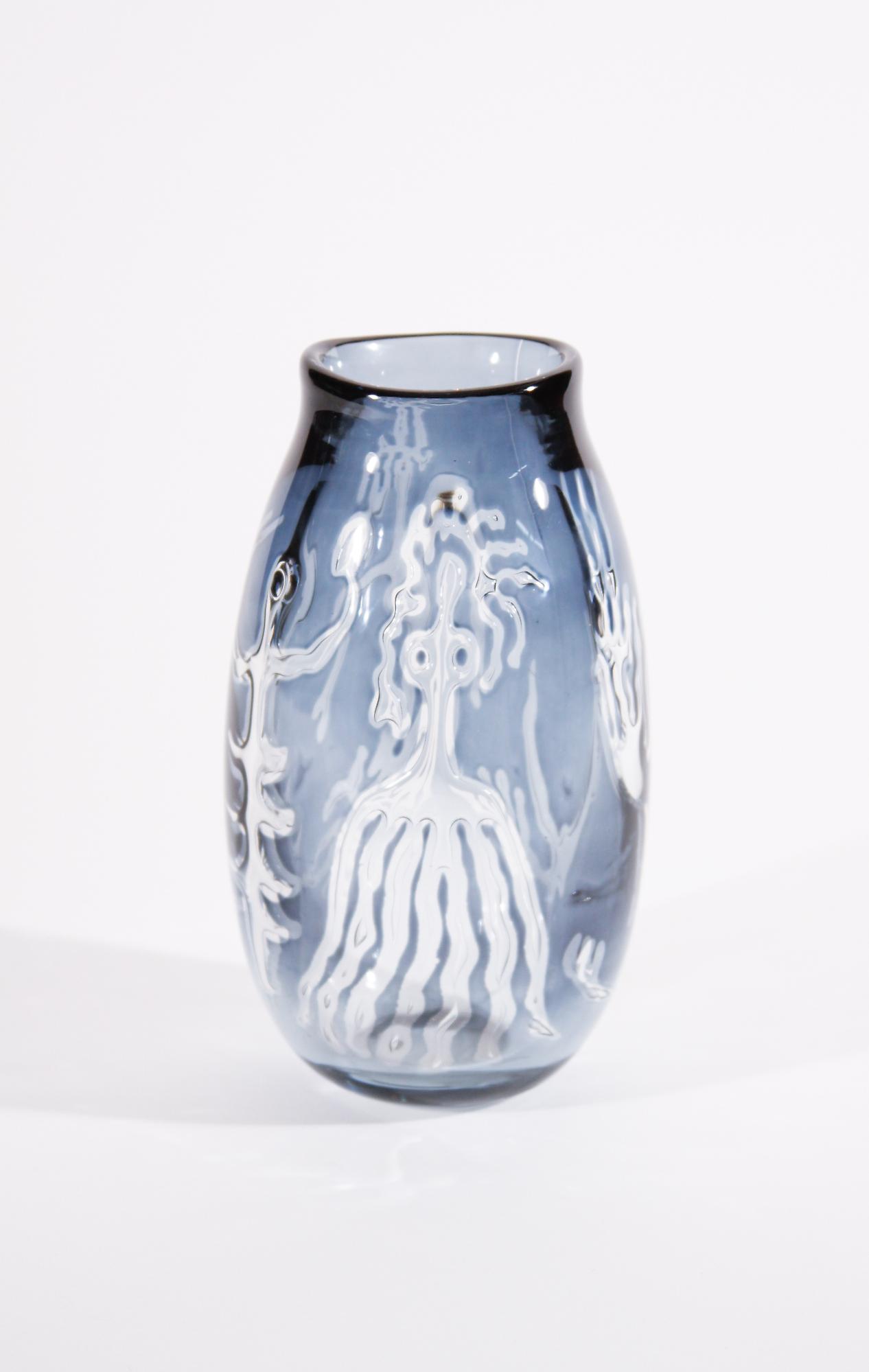
Height: 8 1/4 inches (21 centimeters)
Rare Orrefors 'Ariel' glass vase from 'Water Games' series, the elongated form with irregular rim in clear and blue glass surrounding anthropomorphic figures, designed by Ohrstrom, signed and with date code.
The Swedish firm, Orrefors Glassworks, founded in 1898, named one of their glassmaking techniques “Ariel” after the air spirit in Shakespeare's play “The Tempest.” Orrefors “Ariel” technique was developed in 1936 and was achieved by trapping air within the walls of the glass. “Ariel” glass is closely related to the “Graal” technique which was first introduced at Orrefors in 1916.
In “The Tempest,” the spirit Ariel is trapped in a “cloven pine” and is later freed and bound to serve the magician Prospero. The central layer of air evokes Ariel’s character as a sylph. The artists Gustav Bergkvist, Vicke Lindstrand and Edvin Öhrström created the technique for the firm.
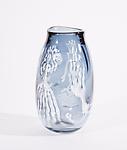 Orrefors
Orrefors 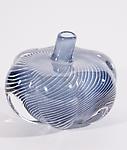 Orrefors
Orrefors 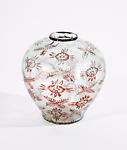 Orrefors
Orrefors